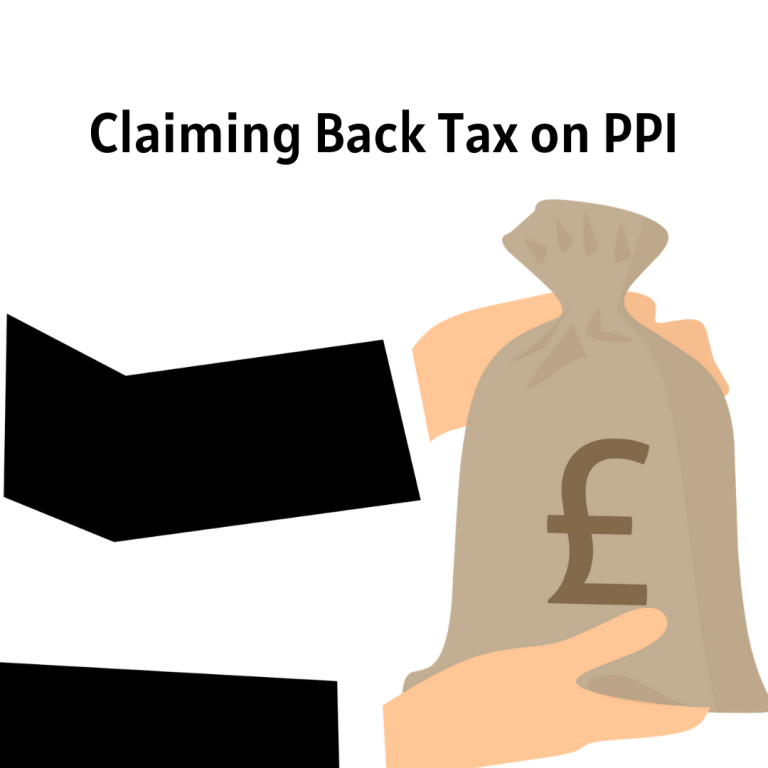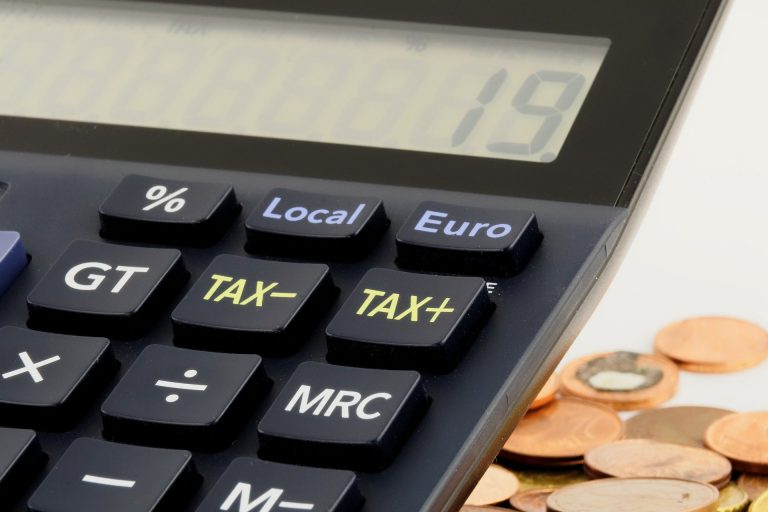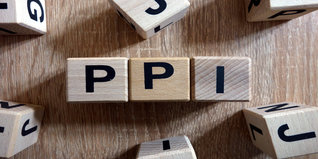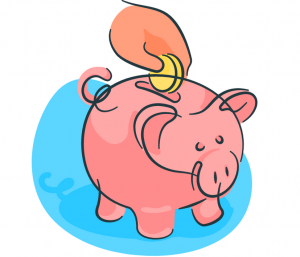
To the surprise of markets and the chagrin of shareholders, the UK’s largest lender, Lloyds Banking Group, has reported a fall in profits. It is because of a much older issue, the UK’s long-running PPI scandal. Lloyds has had to take an additional provision of £550m to cover a flurry of new PPI claims. This reduced its half-year profit to a poor £2.2bn ($2.7bn). The share price dropped 5% based on this.
Mis-selling of payment protection insurance (PPI) is by far the U.K.’s largest financial scandal. The Financial Conduct Authority (FCA) says that since January 2011, British banks and financial institutions have paid out £37.5bn ($45.73bn) in compensation to customers who were wrongly sold PPI insurance. Lloyds Banking Group alone is responsible for more than half of this total.
The origins of the scandal go back to the 90s when financial institutions in the UK. started selling PPI on lending products including mortgages, car loans, and credit cards. PPI was meant to cover loan interest and repayments if the customer became unable to pay, for example, due to illness or unemployment. As it was highly profitable for lenders and insurance companies, it was, unsurprisingly promoted heavily. By 2005, there were an estimated 20 million PPI contracts in existence with annual gross premiums of over £5bn ($6.1bn).
PPI was costly, premiums could increase the cost of a loan by up to 50%. And it mostly was ineffective. In 2005, the Citizens’ Advice Bureau (CAB) objected that there were so many exclusion clauses in the contracts and administrative barriers to claiming that many people could not make successful claims. Furthermore, the CAB reported, people were being sold policies that they did not need or were improper for them. The picture was particularly dismal for people in financial difficulties who were taking out consolidation loans: a new PPI contract could be attached to each rolled-over loan, resulting in escalating premiums and increasing indebtedness.
Compensation claims for mis-sold PPI soared rapidly. Banks hoped to avoid pay compensation: they rejected a high proportion of claims and made it difficult for customers even to pursue claims. But customers persisted and by January 2011, the UK’s financial overseer "Ombudsman” was inundated with complaints and struggling to cope. But things got worse in 2011, after a landmark court ruling. In December 2010, the FSA had imposed a new set of rules to end PPI mis-selling. The rules applied retrospectively. Fearful of a vast increase in claims, the British Bankers’ Association launched legal action against the FSA on the grounds that retrospective application was unjust. But in May 2011, it lost its case. Less than a week later, Lloyds Banking Group announced the first of what was to become a long line of provisions against PPI claims.
The size of the provision took the financial world by surprise. At the time, estimates of the total PPI mis-selling bill, even after the court ruling, were in the region of £4.5bn. Lloyds’ decision to set aside £3.2bn to meet expected PPI claims seemed excessive. But now, we know it was far too low. The latest provision will bring Lloyds’ eventual bill to over a huge £20bn.
When a nationalized bank is forced to pay out compensation to customers, it acts as a kind of fiscal stimulus: customers tend to spend their windfalls, while the bank’s poor profits decrease the value of the shares owned by the government and make it impossible for dividends to be paid. In effect, therefore, there is a transfer from government to citizens. For an economy, the size of the U.K., £20bn or so is a significant fiscal stimulus. Therefore, it can be argued that the PPI scandal helped to offset the economic drag caused by the UK’s government’s spending cuts and tax rises.
And for Lloyds, there is a glimmer of light at the end of the tunnel. The era of PPI claims is coming to an end: the final deadline for customers to make a claim is August 29, 2019. Although this deadline has passed you are still able to claim back tax on PPI that many paid without even knowing.
Click the button below to get started with your claim.
Click here to claim your PPI Refund!
Published on: 06/05/21

Britain's banks were found to have been selling 'ineffective but highly profitable Payment Protection Insurance (PPI) for more than a decade.
Lloyds Banking Group decided to set aside a whopping £3.2bn to compensate customers who were mis-sold payment protection insurance. This has revealed the full extent of a scandal dating back over ten years. The provision following a court ruling that customers could claim compensation on PPI policies dating back many years. This allowed 3 million people to make claims totalling £4.5bn. PPI policies have been sold alongside mortgages, loans and credit cards since the 1990s. They were supposed to repay people's borrowings if their income fell because they became unemployed or ill.
Critics argue that the banking industry began selling PPI to customers after realising that the policies were highly profitable. The complaints increased throughout the 2000s, and in 2004 the Guardian revealed that many banks were returning just 15% of their PPI income to claimants, making PPI much more lucrative than any other type of insurance. Barclays and HBOS, the latter now owned by Lloyds, were both shown to be making huge profits from PPI, prompting Vince Cable, who was then the Liberal Democrat Treasury spokesman, to demand an investigation into "inflated premiums and anti-competitive behaviour".
The following year, Citizens Advice increased the pressure with an investigation that labelled PPI a "protection racket". It was claimed that it was:
Expensive – with premiums often adding 20% to the cost of a loan, and in the worst cases over 50%.
Ineffective – structured to limit the chances of a payout to someone who was genuinely ill.
Mis-sold – without the customer's knowledge, or sold as "essential", or sold to people such as the self-employed who would never be able to claim.
Inefficient – with claimants facing lengthy delays or complicated claims procedures.
The Financial Services Authority made addressing PPI one of their priorities in 2005 when it took over the task of regulating the general insurance industry. The FSA then wrote to the heads of Britain's banks about the issue. The FSA began imposing fines for mis-sold PPI in 2006, starting with a £56,000 penalty for the Regency Mortgage Corporation. Recently, the FSA said, had sold PPI to "right-to-buy" mortgage customers who would not have been able to claim, or who already held insurance. Liverpool Victoria Banking Services were also fined £860,000 in 2008 for adding PPI to many customers' loans without their knowledge. Alliance & Leicester was fined £7m, with the FSA ruling that its staff had been trained to "put pressure on customers" who questioned the inclusion of PPI in their quotation. The FSA also banned one of the worst types of PPI in 2009 "single premium", FSA made a firm stance against the sale of PPI and those who took advantage of it. The Office for Fair Trading became involved in 2007 and quickly referred PPI to the Competition Commission after OFT head John Singleton concluded that "the evidence as a whole suggests consumers get a poor deal".
Personal finance campaigner Doug Taylor said: "We've always known that people were being mis-sold PPI, but we were still amazed to discover the scale of it. It appears that salespeople are chasing their commissions, their bosses are chasing profits – where's the sense of responsibility to the customer?"
The FSA estimated that around 3 million people could be eligible for PPI refunds, worth a total of £4.5bn. Lloyds stated that around a third of the PPI market, followed by Royal Bank of Scotland with 18%. The size of Lloyds's provision suggests that the total PPI bill could now be close to £10bn. Analysts at Deutsche Bank estimated on Thursday that the total industry cost would be £8bn. The figures are huge and there is still time to claim back tax that was sold alongside PPI.
If you have been mis-sold PPI, click on the button below to start your claim!
Click here to claim your PPI Refund!
Published on 06/05/21

If your spouse or civil partner earns more than you, the marital tax exemption allows you to transfer £1,260 of your personal allowance (the sum you will receive tax-free per tax year) to them.
If your claim is approved, it will reduce the higher earner’s tax bill for the current tax year; however, you will be able to backdate your claim if you are eligible.
So, in a nutshell, one of you must be a non-taxpayer and one must be a basic-rate taxpayer.
Your personal allowance (the amount you can receive tax-free) can vary from the amounts above in rare cases, but your tax code letter would tell you. This may be due to the fact that you have a company vehicle, owe taxes, or your savings interest puts you over the limit.
For the tax year 2021/22, the marriage tax exemption is worth up to £252. If you’re qualified and apply successfully, you’ll get the tax break every year after that, so there’s no need to keep reapplying.
You can backdate the claim for up to four tax years (currently 2017/18, 2018/19, 2019/20, and 2020/21) in addition to the current year’s allowance.
The amounts for each year are worth up to:
This means you will get up to £1,220 if you claim for this tax year and backdate the maximum four years. This will happen without you having to check any boxes or make a special request – it will happen automatically.
However, if you want to claim for the 2017/18 tax year, you must do so by April 5, 2022. When the new tax year begins after this date, the furthest you’ll be able to backdate your marriage tax allowance claim will be to 2018/19. Although you’ll still get roughly the same amount – the current tax year plus up to four backdated years – the £230 you should have received for 2017/18 will be lost.

A spouse with unused personal allowance will pass £1,260 to the other (so basically 10 percent of the full allowance). They are only allowed to transfer £1,260 – neither more nor less.
Claim My Tax Back can help you claim for Marriage Allowance. Our application is 100% completed online and only takes a couple of minutes.
Once you apply for Marriage Allowance once, you do not need to apply for it again as it stays in your tax code.
Click the button below to get started with your claim!
Click here to claim for Marriage Allowance
Published on: 06/05/21

If you have received a PPI pay-out since April 2016, tax may have been deducted.
Since April 2016 non-taxpayers and basic rate taxpayers can probably get some or all of this back from the HMRC!
This blog looks at who can claim this tax back and how to do it.
People often feel cross that they are charged tax on a refund. If you return something to a shop for a refund, you wouldn’t expect that to be taxed, it’s your own money you are getting back.
The taxman agrees – the refund part isn’t taxable.
But if 8% extra interest has been added to your refund, this is treated like interest you get on savings and so it’s taxable.
Most lenders deduct tax at the basic rate of 20% from the 8% interest and send this tax to the HMRC.
On your Final Response Letter from your bank or lender, there will be a line that says “interest gross” this is what they worked out the 8% interest to be and a line that says “interest net” has had 20% of tax taken off.
Example: Peter received a PPI pay-out in Nov 2018, he is a 20% taxpayer
Refund of Interest and Fees: £1,616.05
8% interest net: £415.03
Total settlement: £2,031.08
Tax details: 8% interest gross: £518.79
basic rate tax deduction: £103.76
Here the amount Peter was sent was £2,031.08. This was the refund plus the 8% interest (gross) less the basic rate tax deducted
From April 2016 a basic rate taxpayer is allowed to earn £1,000 in savings interest in a tax year without paying tax on it. So this will save you up to £200 in tax – 20% of £1,000.
This amount is £500 for a higher rate taxpayer – which gives the same refund as 40% of £500 is also £200.
This applies to the 8% interest you have got as part of your refund. This interest is still taxable – that’s why HMRC haven’t changed their page saying that it is taxable.
But the new tax-free band means that many people getting one of these refunds shouldn’t have to pay tax and can claim it back if the lender has deducted tax.

This depends on whether you pay income tax and at what rate.
Remember if you are close to the top end of a tax band, the 8% being added may put you over into the next rate tax band.
Luckily you don’t have to do the calculations, just tell the agent or taxman the numbers and they will work out your refund.
If you have a low income or don’t pay income tax at all
If you have an income of less than £18,500 including the 8% on your refund, then all your refund should be tax-free. You should get a refund of all tax deducted.
(Why £18,500? It’s the 2019/20 personal allowance of £12,500 plus the “starting rate of tax on savings ” of £5,000 plus the £1,000 a basic rate taxpayer is allowed to receive from savings tax-free.
If your income is over £18,500 and you pay basic rate tax, you can get back up to £200 of tax that was deducted.
BUT if you received any refunds including 8% interest with no tax deducted and the total amount of any interest you were paid came to over £200 you will have to pay tax on this – see below for some calculations.
The first £200 of any interest should be tax-free.
This is more complicated because the bank or lender has deducted tax at 20% but you should really have paid 40%.
As a result:
Complete an R40 form to claim tax deducted
Unless you normally complete a self-assessment tax form, use the R40 form to get some or all of this tax back.
You have to use a separate form for each tax year.
The current tax year runs from 6th April 2020 to 5th April 2021. Once the tax year has finished, you can claim for all refunds you were given in the last year and you also know how much other income you had during that year (from your P60 or P45) so it’s simple to fill in the form.
If you just had one refund and no other savings interest, you enter the details of your normal income from a job or benefits or a pension in boxes 2.1 to 2.9.
Then you put the details of your refund in boxes 3.1, 3.2, and 3.3.
You should get a refund within about 6-8 weeks! For the example shown above, this should be the £103.76 tax that was deducted.
Do not use R40 if you submit a self-assessment form
The R40 form is for use by people who do not submit a self-assessment form.
If you are self-employed or have to submit a self-assessment for some other reason, don’t use the R40 form, just enter the details of the 8% interest and tax deducted on your self-assessment form as “other savings income where tax has been deducted at source”. The refund you get will be the same.
You can also amend the previous year’s self-assessment forms if you have just found you can get the tax back from a PPI refund in 2017.
Like all tax refunds/rebates from HMRC, you can complete the paperwork and submit the application yourself. HMRC does not make the process easy or simple, but it’s well worth applying as this is money that is owed to you.
For a quick and easy process, National Tax Helpline can assist in claiming back your PPI Refund. Click the button below to get started.
Click Here to Claim for your PPI Refund
Published on 04/05/21

The deadline for claiming back any PPI payments you made for policies sold incorrectly expired on the 29th of August. You should have been able to get your claims filed in time and got your cash back, however, there is still a chance you could still be owed more. What many fail to realise is that part of their payouts is taxed at the source automatically. Meaning, if you were ineligible to pay tax for the year, you will be allowed to claim back the extra tax you have paid.
Payment Protection Insurance (PPI) policies should have ensured you didn’t get in trouble paying off things like loans, credit cards, and mortgages. If you became sick or became unemployed, for instance, the policy would keep up your payments until you were able to do so again. In theory, they were not a bad idea. The trouble was, PPI schemes were extremely profitable, so companies were pushing their staff to promote to their customers at every opportunity, whether they needed them or not. Many never even realised they’d signed up for PPI as it was included in the small print of their agreements. Others were sold policies they could never use since they did not qualify (if they were self-employed, for instance).
Eventually, the authorities caught on to what was going on and started acting against these companies. Single-premium PPI policies were banned in 2009, and lenders were forced to start taking complaints seriously. This meant a lot of people got compensation for wrongly sold PPI agreements.
Since this is all money, you should have not paid, your refunded PPI payments do not have taxes on them. However, you do not only claim the payments back. You are also receiving interest on them, to try and put you back where you should have been financially if you had not been wrongly charged for PPI. So, on top of your payments, you are getting:
The statutory interest is eligible to be taxed. It is treated the same as any savings interest you might be getting.
Since 2016, many people have been able to earn up to £1,000 a year in interest tax-free (the Personal Savings Allowance). That includes the 8% interest on your PPI payout. People earning over £50,000 have a lower cap of £500 tax-free, while anyone making over £150,000 gets nothing. Most of those PPI pay-outs have still been getting taxed at the Basic Rate of 20%, even if they should not have been. That means you could still be owed money even if you were making enough to pay tax.
Like any other type of tax rebate, you can claim back what you are owed for the last four years.
Click here to get started with your claim
Published on: 04/05/21

If you have received a PPI or payday loan refund or any other type of affordability refund, tax may have been deducted. Since April 2016 non-taxpayers and basic rate taxpayers can claim this back from the HMRC! This article looks to answer any questions you may have about your eligibility in claiming back what is owed to you.
People are often unhappy that they are charged tax on a refund. If you were to return something to a shop for a refund, you would not expect that to be taxed as it is a simple refund for a purchase that you made. HMRC agrees and the ‘refund’ part is not taxable.
But if 8% extra interest has been added to your refund, this is treated like interest you get on savings and so it is taxable as HMRC have explained:
Most lenders deduct tax at the basic rate of 20% from the 8% interest and send this tax to the HMRC. When they give you details, a line that says “interest gross” is what they worked out the 8% interest to be and a line that says “interest net” has had the 20% of tax taken off. This is an example:
Refund of Interest and Fees: £1,513.06
8% interest net: £385.02
Total settlement: £1,898.08
Tax details: 8% interest gross: £481.27
Basic rate tax deduction: £96.25
Here the amount he was sent was £1,898.08. This was the refund plus the 8% interest (gross) less the basic rate tax deducted.
From April 2016 a ‘basic rate’ taxpayer can earn £1,000 in savings interest in a tax year without paying tax on it. So, this will save you up to £200 in tax – 20% of £1,000. This figure increases to £500 for a higher rate taxpayer – which gives the same refund as 40% of £500 is also £200.
This applies to the 8% interest you have got as part of your refund. This interest is still taxable, HMRC has made no changes to their website which breaks this down. But the new tax-free band means that a large number of people getting one of these refunds should not have to pay tax and can claim it back if the lender has deducted tax.

This is very much dependent on whether you pay income tax and at what rate. The following are simple cases. It is important to keep in mind that if you are close to the top end of a tax band, the 8% being added may move you into the next band. If you are unsure about the calculations allow tax professionals to work out just how much you are owed.
If you have a lower income of less than £18,500 including the 8% on your refund, then all your refund is tax-free. You should therefore receive a refund of all tax deducted.
Click here to get started with your claim
Published on: 04/05/21

The Personal Savings Allowance was introduced in April 2016. It offers the chance for savers to grow their money tax-free by earning interest up to £1,000 for basic rate taxpayers, or up to £500 for higher rate taxpayers.
All interest from savings will be paid gross, which means tax will no longer be deducted by your bank or building society.
HMRC has supplied a few helpful examples to illustrate how the allowance works in practice for basic and higher-rate taxpayers:
You earn £20,000 a year and get £250 in account interest – you won’t pay any tax because it’s less than your £1,000 allowance.
You earn £20,000 a year and get £1,500 in account interest – you won’t pay tax on your interest up to £1,000. But you’ll need to pay basic rate tax (20%) on the £500 above this.
You earn £60,000 a year and get £250 in account interest – you won’t pay any tax because it’s less than your £500 allowance.
You earn £60,000 a year and get £1,100 in account interest – you won’t pay tax on your interest up to £500. But you’ll need to pay a higher rate tax (40%) on the £600 above this.
Interest earned on non-Isa savings and current accounts is included in the personal savings allowance. There are some exceptions, such as Individual Savings Accounts (ISAs) and some NS&I savings options, such as premium bonds. Since they are not tax-free, they are not protected by the personal savings allowance. Some investments are also covered by the personal savings allowance.
Profit from government or corporate bonds, peer-to-peer lending interest, and interest dividends, such as income from bond funds, approved unit trusts, open-ended investment firms, and investment trusts, can all be used against your personal savings allowance. In a nutshell, the underlying assets determine whether the investment gain is taxed as savings or as a dividend.
Yes, savings income under the allowance also counts against the basic or higher-rate cap, affecting the amount you're entitled to and the tax rate you'll pay for any extra earnings. If you are a basic-rate taxpayer who earns enough interest from savings to drive you over the higher-rate tax threshold, you are only entitled to a £500 deduction and must pay 40% tax on the remainder.
In Scotland, the higher-rate threshold works slightly differently. You pay 41% income tax on income above £43,662 in 2021-22, up from £43,430 in 2020-21.

In most cases, any taxes owed will be paid automatically via the pay-as-you-earn (PAYE) scheme, which will rely on the information given by banks and building societies. If this is the case, you should receive a 'notice of coding.' Alternatively, if you normally file a self-assessment tax return, it may be reported as usual. Interest may be eliminated as part of long-term efforts to overhaul the existing tax system, interest could eventually be processed directly from individual digital tax accounts.
If your bank or building society did not use your entire personal savings allowance, you will recover the tax you paid on your savings interest. To assert the tax you were wrongfully paid, fill out form R40. Savings from up to four tax years ago can be said. It usually takes six weeks to get your money back.
In addition to the personal savings allowance, an additional tax break already lets low-income people save tax- If your bank or building society did not use your entire personal savings allowance, you will recover the tax you paid on your savings interest. To assert the tax you were wrongfully paid, fill out form R40. Savings from up to four tax years ago can be said. It usually takes six weeks to get your money back.
free or at a reduced rate. This £5,000 ‘starting rate for savings' means that if your net taxable income is less than your personal income tax exemption plus £5,000, you will not pay any tax on your savings.
This means you won't pay any tax on your investments if your gross taxable income in 2021-22 is less than £17,570. It's easier to think of these payments as being stacked on top of one another: first, the tax allowance (£12,570 for 2021-22), then the £5,000 starting savings rate at 0%, and eventually, the personal savings allowance of up to £1,000. When HMRC calculates the tax you owe, they’ll first look at your income from other sources, and then from your savings income.
Even though there are now generous tax cuts on savings and interest on non-ISA savings accounts is generally higher, there are still considerable long-term benefits to ISA's, particularly if you earn a lot of money or have a lot of money saved. Combining a variety of savings options and ISA's, as well as high-interest current accounts, is likely to be the best way to maximize returns and minimize tax.
Published on: 04/05/21

You could be entitled to recover £100s of tax for up to five years of expenses if you wear a uniform at work and have to wash, fix, or replace it yourself. If it's a branded T-shirt or a uniform specific to your industry, you could be owed a rebate.
To be eligible for tax exemption, all of the following conditions must be met:
Armed forces personnel are one category that should not be required to go through the process. Their tax code could address the expense of maintaining their uniforms, with their tax-free personal allowance increased to compensate.
If you're self-employed, you can claim uniform and laundry costs on your self-assessment tax return rather than claiming directly with HMRC.
The regular flat-rate uniform maintenance cost allowance is £60. You'll get back the amount of tax you would have paid on the £60 if you applied for a uniform tax refund. As a result, whether you're a basic-rate taxpayer, you'll get a refund of 20% of £60, or £12. Higher-rate taxpayers can receive a refund of £24.
You can backdate your claim for up to 4 years.
Some jobs have more strict restrictions, such as ambulance personnel, who have a maximum annual allowance of £185 due to the use of specialized uniforms. For each year they say, basic-rate taxpayers will receive £37 in tax back (higher-rate taxpayers would receive £74). Nurses and midwives will apply for shoes, socks, and tights in addition to their regular allowance (£125).
Click here to check the full list of industries

Your tax code will adjust for the current tax year, meaning you'll be taxed less in the future and see a small boost in your take-home pay. According to HMRC, getting a new tax code normally takes two days. However, whether you'll see a difference in the actual pay depends on whether the employer receives it before the payroll cut-off date.
HMRC will either make changes to the tax code or grant you a tax refund if your claim is for previous tax years. You'll get a letter from HMRC after your application has been submitted and processed, detailing how much you're entitled to and when the money will be paid.
Claim My Tax Back offers assistance in claiming back money owed to you for your Uniform Expenses. The application process is quick and easy and only takes 2 minutes. After you have submitted your online claim, it then takes between 8 to 12 weeks to find out how much you could be owed and a payment will be sent to you.
Click here to claim for Uniform Allowance
Published on: 04/05/21